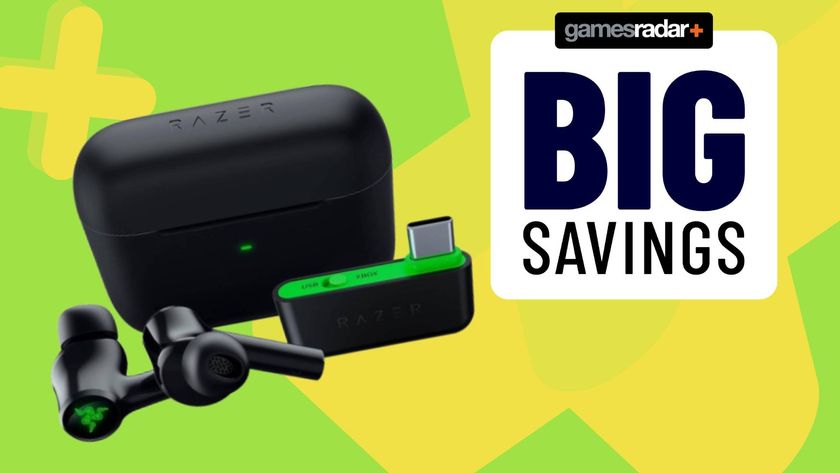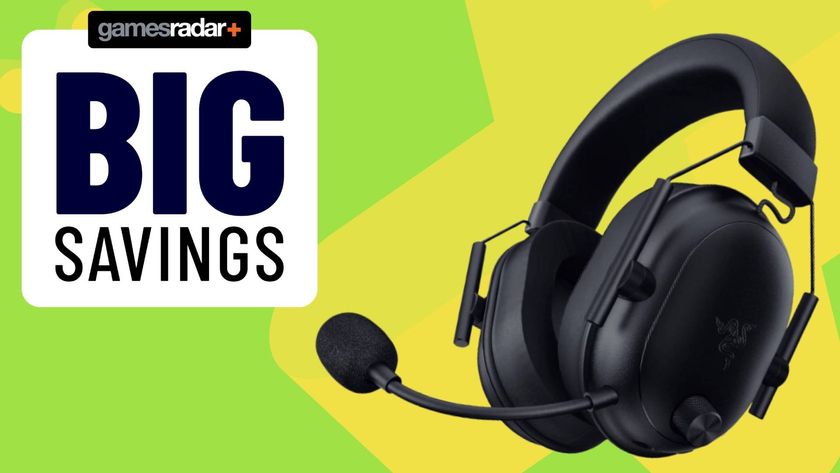SteelSeries Arctis Pro Wireless vs Corsair HS80 RGB Wireless - which should you choose?
Two high-end headsets face off in a battle for wireless supremacy
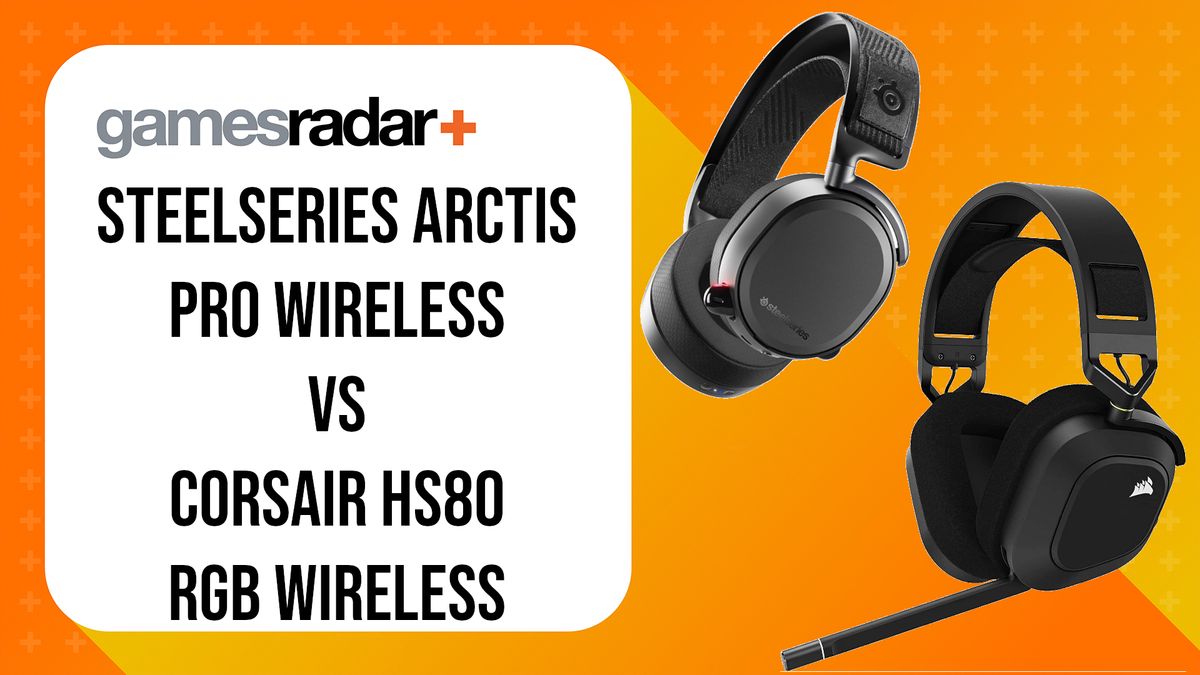
An old favorite versus a new (ish) kid on the block - the SteelSeries Arctis Pro Wireless vs the Corsair HS80 RGB Wireless is an exciting match-up in the cord-free gaming headset space. We think it shows some nice differences and advancements and some recent hands-on with the Corsair HS80 has led us here: pitting them against each other head-on.
Now, Corsair’s headset range seems to be growing like a family of Gremlins in a thunderstorm. The stylings vary wildly between the California company’s VOID and HS models, which both look totally different again to the flagship Virtuoso model. To this reviewer’s eye, the HS80 RGB Wireless is the best-looking headset Corsair has produced, including the much pricier Virtuoso. It also has a spec sheet and feature list pitched at taking all the best gaming headset and best wireless gaming headset awards, along with leaving a £140/$150 hole in your pocket.
It’s impressed us so much, in fact, that we’re inclined to pit it directly against a much more expensive model - our longtime favourite in the wireless realm, the Steelseries Arctis Pro Wireless. MSRP was over $300/£300 for the flagship Arctis, but it’s going for around $200/£200 now. Can it hold off Corsair’s pretender to the throne?
SteelSeries Arctis Pro Wireless vs Corsair HS80 RGB Wireless: Design & features
SteelSeries Arctis Pro Wireless
What the Arctis range has always had going for it is a departure from that played-out ‘gamer’ aesthetic. You know the one: sharp angles everywhere, tribal designs, RGB up the wazoo.
And although the Pro Wireless doesn’t look massively different in its visual and ergonomic design from cheaper models like the Arctis 3, 5, and 7, there are upgraded construction materials all over. It’s still built around that ski-goggle headband design and features those distinctive Arctis earcups. But the band itself has a little more detailing, and a pleather Steelseries logo stitched onto it. The earcup cushioning isn’t that deep, but it’s of sufficient quality to keep you happy for hours.
The mic - never a strong suit of the range - might actually lose out to Corsair’s HS80 on all fronts, though. Not only does it sound thin next to its rival, but it also looks and feels much flimsier despite its retractable design, which is, admittedly, very convenient.
There’s a lot more to fiddle with on the Arctis' base station than Corsair can compete with via its limited physical controls, though. You can set the levels of everything from mic sidetone to chat mix, cycle EQ presets, and in our favourite feature of all, the swappable battery slots into the base station itself ready to be popped into the headset as soon as the other one depletes. That means you’re never without charge, and never need to plug the headset in. Clear win for Steelseries there, even with older hardware.
Sign up to the 12DOVE Newsletter
Weekly digests, tales from the communities you love, and more
There’s also Bluetooth connectivity to back up the wireless connection, and that lets you use the Arctis Pro headset pretty easily with your phone, tablet, or laptop without taking up any USB slots. A handy feature to have, and effectively it bullet-proofs itself from signal dropouts in competitive gaming scenarios.
Corsair HS80 RGB Wireless
Let’s be upfront about this: we absolutely love the visual design on show on the HS80 RGB Wireless. The mix of construction materials and finishes is exemplary, and we particularly like the rubberised finish on its chunky headband. There’s a bit of the Arctis about it, too, with a ski-goggle-style elasticated headband on the underside instead of the traditional padding mounted directly to the headband frame. Like that wasn’t fancy enough, Corsair puts some padding on the elasticated headband too, which is finished in a nice soft pleather.
Tiny gold detailing around the earcup hinge really sets off the otherwise blacked-out colour scheme, and we even like the pin-sharp RGB Corsair logos on the upper corners of the earcups. Finally, the oversized fabric earcup cushions exaggerate the headset’s form and finish off a look that genuinely wouldn’t be out of place in a Richer Sounds showroom.
The only downside to the material selection is that it’s a challenge to keep the HS80 RGB Wireless looking as nice as it did when you got it out of the box. Those rubberised plastic sections on the headband and earcup inners do love to suck up grease from your fingertips, so you might want some rubbing alcohol to hand if you want to keep them *checks notes* 'on fleek', as the youngsters say.
The Arctis-style headband combines with the earcup shape and clamping force nicely, making for a really comfortable long-term wearing experience. Talking about comfort is a bit more subjective with elasticated headbands since they’re not adjustable is measurable increments, but on this tester’s smaller dome the HS80s sit wonderfully. The weight’s relatively light at 367g, and the cushioning’s more than ample.
Controls are minimal and simple - a power button on the back of the left earcup, and a notched volume scroll wheel below that. Except for that, only the USB-C charging input breaks those exquisite lines.
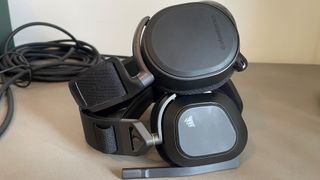
SteelSeries Arctis Pro Wireless vs Corsair HS80 RGB Wireless: Performance
SteelSeries Arctis Pro Wireless
We know by now Arctis headsets sound good. They were the trailblazer for a flatter EQ response, and that’s typified in the old flagship model. It’s just as suited to picking out a barefoot man with a frying pan legging it across Erangel in PUBG as it is to listen to Spotify without sounding like you’ve been plunged underwater, as many bass-heavy gaming headsets of yore were prone to.
After spending a lot of time directly comparing both, I prefer the HS80 RGB Wireless’ sound. There’s a bit more clarity to my ears, and it has more low-end oomph that it seems to have tamed, fleshing out an ambient sound in-game rather than dominating the landscape.
However, outside of sound quality, it’s a clear win for the Arctis Pro Wireless when it comes to the, er, wireless side of the equation. The range is enormous and there’s nowhere I can go in my home that produces signal dropout. And as for battery life, my 2019 model’s been in frequent use for several years now and each battery can still outlive the HS80s.
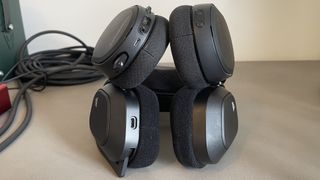
Corsair HS80 RGB Wireless
The HS80 RGB Wireless' cups are Dolby Atmos-compatible, so you get the questionable benefit of certified digital surround in supported games like Forza Horizon 5, Sea of Thieves, and Cyberpunk 2077. More importantly, they produce a relatively neutral, detailed sound elsewhere.
We found that the earcup cushion fabric produced something closer to an open-backed headset sound with the lesser noise insulation they provide, but that seems to work with the EQ curve its 50mm drivers are tuned to. As a result, you get those breathy high-end sounds characteristic of higher-end Arctis models, the difference here being a more pronounced bass response.
This one’s down to the ear of the beholder, but in our testing, we found the bass just marginally lacking precision - again, probably down to the earcup cushion material. It’s by no means a bad overall sound, though, and using Corsair’s ubiquitous iCUE software you can dial it down - or indeed up - to taste. In our experience, the software EQ presets weren’t much use, though, and we could get much better sounds starting with a flat EQ and making tiny adjustments manually.
Still more impressive in sound quality terms is the mic. It’s an unassuming unit but produces a really clear tone with just the right amount of room noise to avoid that CB radio sound that older and less expensive headset mics produce. It softens plosives nicely, doesn’t seem to add much compression to the signal, and although the mic arm itself isn’t very pliable, it seems to work better slightly further away than we’d normally place a mic anyway so that pro and con cancel each other out.
There is, tragically, a chink in the armour. The battery life here isn’t anything like the 20 hours stated on the box, and charge time is really long too - around two hours from depleted to full charge during our testing. We suspect the RGB lighting is a contributing factor here, but even with the brightness turned down via iCUE we were getting 10-12 hours per charge. Let’s be real, that doesn’t make these unusable. Just know you’ll need to get into the habit of charging them each night, or wearing them plugged in for a couple of hours each day.
There have also been reports from users about spotty wireless signal, but in our testing the receiver held up pretty well. There’s only one area of my three-storey home where I get signal dropouts, and it’s the furthest possible point from my PC, two floors up and several rooms across. In practical terms, that’s never going to be an issue for me. I can walk down to the kitchen and make a drink while still chatting to my mates on Discord.
SteelSeries Arctis Pro Wireless vs Corsair HS80 RGB Wireless: Value
Given the price difference between these two models, the HS80 RGB Wireless is an incredible headset and every bit the equal to its more expensive rival from Steelseries. It’s so close to a no-contest, best wireless headset release. If the battery life and charge time were improved, Corsair would have an Arctis-beater on its hands, but the inconvenience of having to plug in so frequently and for so long does diminish what’s otherwise a fantastic package of looks, comfort, and features. We live in hope that a firmware update might alleviate that - maybe something about RGB power use? - but even if such a thing never materializes, we’ll be wearing the HS80 RGB Wireless for the foreseeable, and enjoying its many qualities.
But how about this: should you buy an Arctis Pro Wireless instead? Well, with a new Nova model just out of the doors from Steelseries, this 2019 flagship is starting to show some signs of age. A new generation of consoles has turned up since its release, so if you’re looking for an Xbox Series X headset or a PS5 headset, it’ll always be easier to buy a more recent model. As a PC gaming headset, though, it’s still a luxurious and feature-rich experience. The Nova looks and feels better, however, and its base station can do everything the old model could. All it’s missing is the swappable battery design of its predecessor.
SteelSeries Arctis Pro Wireless
- + Swappable battery design
- + Feature-rich base station
- + Failsafe wireless and Bluetooth connectivity
- - Getting on a bit now
Corsair HS80 RGB Wireless
- + Those looks
- + Neutral but strong sound
- + Well-rounded mic
- - Short battery life, long charge time
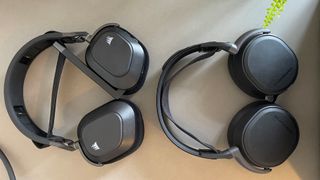
SteelSeries Arctis Pro Wireless vs Corsair HS80 RGB Wireless: Winner
Factoring in price, features, and how recently the two models arrived on the market, Corsair’s new wireless set takes the glory. It’s not without its battery issues, and could definitely benefit from Steelseries’ swappable battery design, but in every other department, it’s exemplary.
How we tested the headsets
Since the HS80 RGB Wireless is Dolby Atmos-enabled, we loaded up Cyberpunk 2077 and Sea of Thieves for some quality time driving Night City and sailing the seas, respectively. Our usual online games gave the mic its obligatory Discord run out - Fall Guys and Vermintide 2 right now. When we test wireless range, a walk around our house gives a good indication of signal strength and reliability.
To test battery life, we keep the headset volume at the same level and run RGB brightness at 50%. We tested charge time during usage and also when leaving the headset off our ears.
Testing sound quality has a subjective element, but playing musical and gaming sound sources while moving between the HS80s and Steelseries Arctis Pro Wireless highlights the differences in tone and allowed us to hear the subtler differences.
If you're after more wireless headset options then check out our guides to the best PS5 wireless headset and best Xbox Series X wireless headset.
Phil Iwaniuk is a multi-faceted journalist, video producer, presenter, and reviewer. Specialising in PC hardware and gaming, he's written for publications including PCGamesN, PC Gamer, GamesRadar, The Guardian, Tom's Hardware, TechRadar, Eurogamer, Trusted Reviews, VG247, Yallo, IGN, and Rolling Stone, among others.
Most Popular







